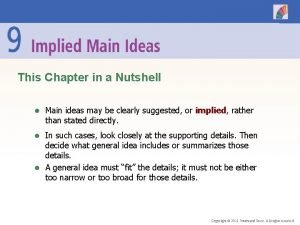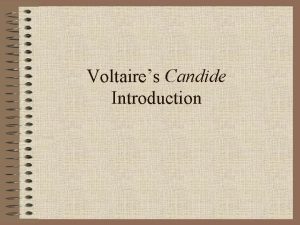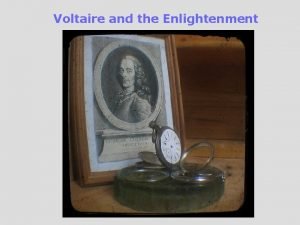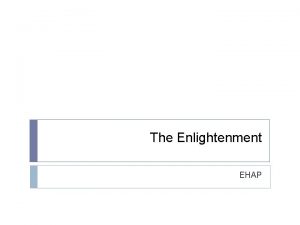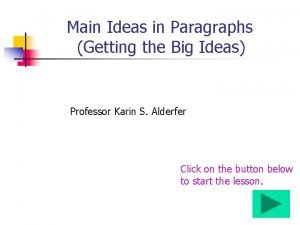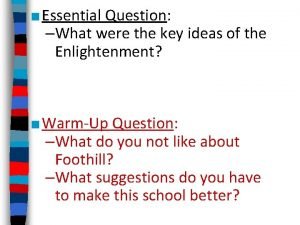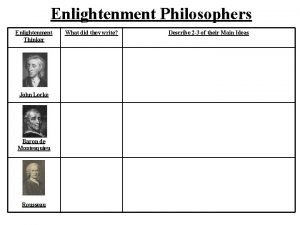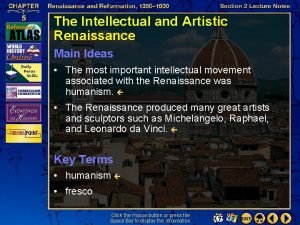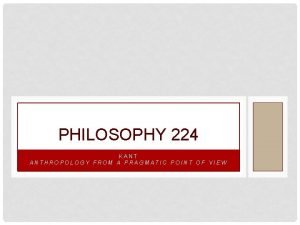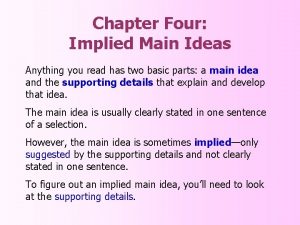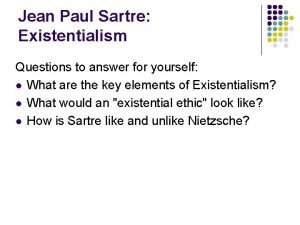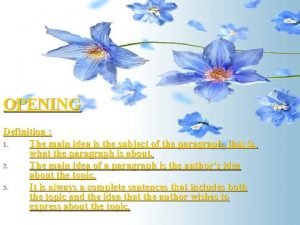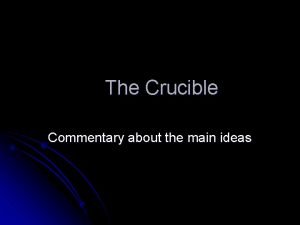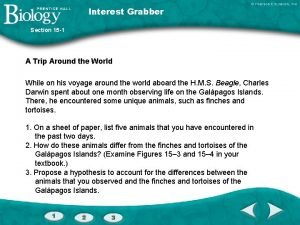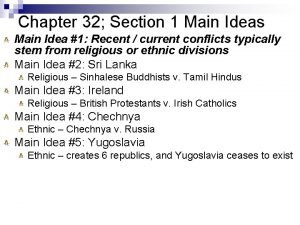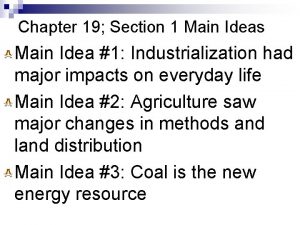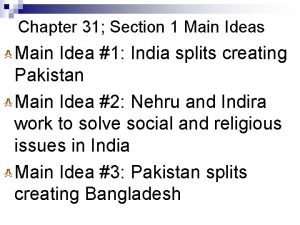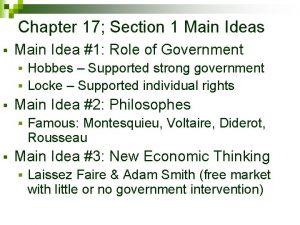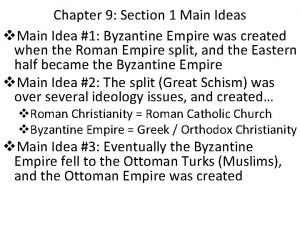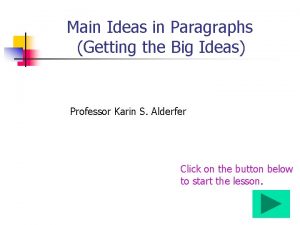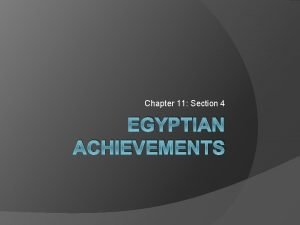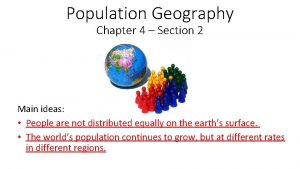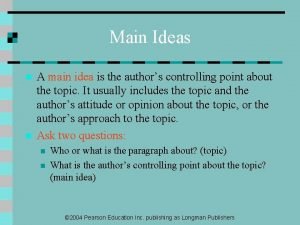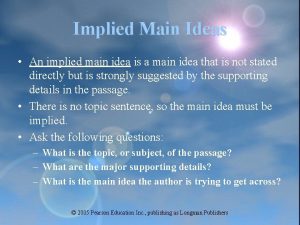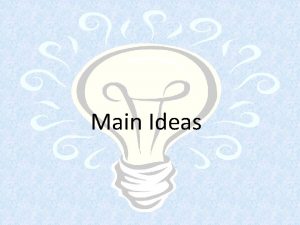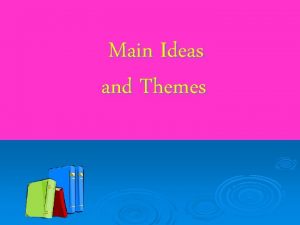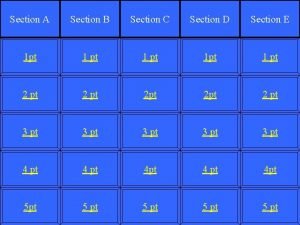Chapter 14 Section 1 Main Ideas v Main





















- Slides: 21

Chapter 14: Section 1 Main Ideas v Main Idea #1: Motivations for exploration were $, adventure, imperialism, religion v Main Idea #2: Sailing for Portugal v. Dias mapped the coast of Africa v. Da Gama traded & mapped the coast of India v. Main Idea #3: Columbus / Spain, tried to sail to the Indies but found the Caribbean instead v Main Idea #4: Magellan / Spain was the 1 st to circumnavigate the globe

n n n Section 1: The Search for Spices expanded greatly with European explorers in the 1400 s Motivations for Exploring the Seas began with the spice islands in Moluccas (Indonesia), and soon changed due to the Renaissance spirit and Europeans wanting to cash in Portugal Sails East, taking Madeira and Azores islands and the port Ceuta in Northern Africa ¨ Mapping the African Coast helped Prince Henry and Dias (captain) pass the Cape of Good Hope (southern most tip of Africa) ¨ Seeking India Vasco da Gama expanded on Dias’ voyage making it to Calicut, traded for spices (making a huge profit), seized many ports on the Indian Ocean, and created a trading empire

n Columbus Sails West for Spain figuring a few weeks of travel ¨ Reaching Faraway Lands, funded by Ferdinand Isabella of Spain, Columbus’s 3 ships reached the Caribbean (Columbus believed he had reached the West Indies, and Columbus would return to Spain as a hero) ¨ Dividing the Globe in Half between Spain and Portugal by Pope Alexander VI by the “line of demarcation” was implemented with the signing of the Treaty of Tordesillas ¨ Naming the Western Hemisphere occurred as Vespucci’s German cartographer Waldseemuller called the new lands “Americas”

n The Search for a Direct Route Continues, but ended with Magellan sailing around the southern tip of south America (naming the straits “Straits of Magellan”), and he would name the Pacific Ocean (Latin for peaceful); Magellan would sail to the Philippines (where he died), and 1 ship and 18 crewmen survived reaching Spain (first to circumnavigate the globe)


Chapter 14: Section 2 Main Ideas v. Main Idea #1: Portugal was the 1 st to open up Africa v. Main Idea #2: Other European countries took advantage of the slave trade v. Main Idea #3: Oyo & Asante African kingdoms benefited from the slave trade

n n Section 2: Turbulent Centuries in Africa began as European explorers entered Africa in 1400 s Portugal Gains Footholds using force along the East African coast taking (Mombasa and Malindi), but the Portuguese empire declined and did not leave a lasting legacy in Africa The African Slave Trade Explodes (nothing new) as slaves often became artisans, soldiers, merchants, or worked on a farm Europeans Enter the Slave Trade trading textiles, metalwork, rum, tobacco, weapons, and gunpowder for the slaves; for the most part Europeans did not travel inland for slaves, but traded for slaves with coastal countries

*Directions: Answer the following questions dealing with the map. 1. What does the map show? 2. Why did the Americas need slave labor? 3. How many slaves went to Brazil? 4. What was the main reason slaves were taken to Mexico?

n New African States Arise through the profit and development of the slave trade ¨ The Asante Kingdom increased it power through trading gold and slaves for firearms ¨ The Oyo Empire increased its military and land through trading slaves for firearms

n The European Presence Expands: British and French – both started out in present day Senegal, and the French settled there while the British would explore inland; Dutch – settled the southern tip of Africa and built Cape Town (most of the settlers were Boers or Dutch farmers)

Chapter 14: Section 3 Main Ideas v. Main Idea #1: Portugal gains a foothold in India v. Main Idea #2: The Dutch East India Company dominated trade in Africa and India v. Main Idea #3: Spain took the Philippines (important for trade)

Section 3; European Footholds in South and Southeast Asia began with Portuguese domination (cannon power) n Portugal Builds an Eastern Empire by gaining the trust of the Indian Princes during the Mughal Empire (promising protection from other European conquest) n ¨A Rim of Trading Outposts increased though physical domination (Goa and Malacca), and for the most part Portugal controlled the spice trade between Europe and Asia through it massive network of trading posts

n Rise of the Dutch came through its efforts to gain a foothold in trade ¨ Building a Mighty Sea Power began with a settlement in Cape Town and other port cities ¨ A Powerful Dutch Company called the “Dutch East India Company” was set up by a group of wealthy merchants, and what made the company unique what its sovereign powers (it could do what it wanted)

n Spain Seizes the Philippines as Magellan claimed the archipelago for Spain in 1521 (renaming them after King Philip II), and this location became important (gold and silver came from Mexico and Peru and was used to trade for Chinese goods)

n Mughal India and European Traders had 2 different ideas Europeans trade Mughal continue with life ¨A Great Empire Shatters as conflicts between Muslims and Hindus and civil wars depleted resources, causing an increase in taxes, then rebellions over the high taxes, and the government would collapse due to widespread corruption n Both British and French have East India Companies which made treaties with local rulers allowing them to hire native Indians as soldiers (sepoys)

East India Trading Companies Activities… Positives of the Negatives of the Dutch East India Company 1. _________________ 2. _________________

Chapter 14: Section 4 Main Ideas v. Main Idea #1: Europeans trade with China, but China wants nothing to do with them v. Main Idea #2: Korea practices isolation, but is unsuccessful due to Chinese and Manchurian invasions v. Main Idea #3: Japan welcomes European traders, but later kicks them out

Section 4: Encounters in East Asia by the Portuguese created excitement for the Portuguese and caution by the Chinese n European Contact With Ming China again showed China wanted nothing to do with Europeans n ¨ The Ming Limit Trade to Canton (port region), but open it up to the Portuguese, Dutch, and English (had strict supervision by imperial officials); when the trading season was over all foreigners had to leave China

n The Manchu Conquest coming from the north over the Ming as the Ming were declining, the Manchu seized Beijing and made it their capital ¨ Founding the Qing Dynasty was easy as the Manchus adopted the Confucian system of government, and local governing remained in the hands of the native Chinese (Manchu troops were stationed across the land to ensure loyalty) ¨ Rejecting Contact With Europeans increased, and reached it height when Lord Mc. Cartney demanded to see Emperor Qianlong, refused to perform the kowtow, and Qianlong refused to see him (frustrating Ma. Cartney) n This would eventually come back to haunt China

n Korea Chooses Isolation but struggles from Japanese invasions in 1592 and 1597 (villages were burned, famine and disease were widespread, and the population decreased), and then invasion from the Manchus in 1636 (forces Korea to become a tributary state) ¨ It was after those 3 invasion the Korean practices isolationism ¨ Positives: during isolation Korea experienced success in the area of arts and literature

n Foreign Traders in Japan were welcomed (Spanish, Portuguese, Dutch, English) as Europeans offered firearms, and this was a time when Daimyos were fighting for power (which eventually helped the Tokugawa Shoguns take power) ¨ Although the Japanese first welcomed western culture (Christianity and Renaissance technologies), they quickly became hostile towards foreigners n Expelled foreign missionaries, killed thousands of Christians, barred all European merchants, outlaws the building of large ships, and forbid travel n During this time of isolation (200 years) arts and internal trade boomed
 Townsend press chapter 4 implied main ideas
Townsend press chapter 4 implied main ideas Ideas have consequences bad ideas have victims
Ideas have consequences bad ideas have victims Que es una idea principal
Que es una idea principal Concept mapping chapter 10 meiosis 1 and meiosis 2
Concept mapping chapter 10 meiosis 1 and meiosis 2 Candide
Candide Locke and voltaire
Locke and voltaire Voltaire enlightenment ideas
Voltaire enlightenment ideas Big idea
Big idea What ideas are john locke known for
What ideas are john locke known for Christianity main ideas
Christianity main ideas Baron de montesquieu main ideas
Baron de montesquieu main ideas A key intellectual movement of the renaissance
A key intellectual movement of the renaissance Immanuel kant main ideas
Immanuel kant main ideas Hume's fork examples
Hume's fork examples Identifying the topic sentence
Identifying the topic sentence What is an implied main idea
What is an implied main idea Which is the implied main idea in the text
Which is the implied main idea in the text Characteristics of existentialism
Characteristics of existentialism Main idea definition
Main idea definition Puritanism and individuality in the crucible
Puritanism and individuality in the crucible Section 15-1 the puzzle of life's diversity answers
Section 15-1 the puzzle of life's diversity answers Section 15–2 ideas that shaped darwin’s thinking
Section 15–2 ideas that shaped darwin’s thinking
